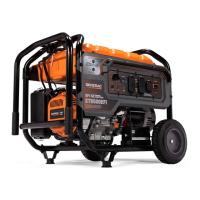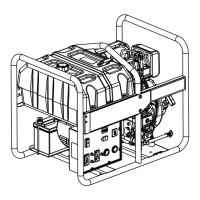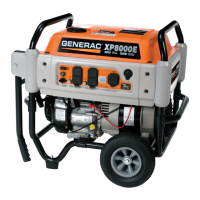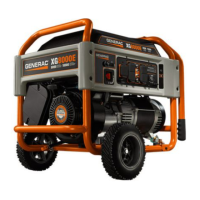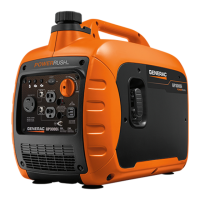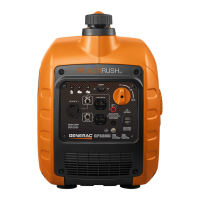Section 2 Direct Excitation (Brush Type)
6 Diagnostic Repair Manual
via Wire 4, and the positive brush and slip ring. This
excitation current flows through the rotor windings and
through the negative (-) slip ring and brush on Wire 0.
The greater the current flow through the rotor windings,
the more concentrated the lines of flux around the rotor
become. The more concentrated the lines of flux around
the rotor that cut across the stationary stator windings,
the greater the voltage that is induced into the stator
windings.
Some generators have color coded wires. Always use
the appropriate schematic and wiring diagram for unit.
Initially, the AC power winding voltage sensed by the
regulator is low. The regulator reacts by increasing the
flow of excitation current to the rotor until voltage
increases to a desired level. The regulator then maintains
the desired voltage. For example, if voltage exceeds the
desired level, the regulator will decrease the flow of
excitation current. Conversely, if voltage drops below the
desired level, the regulator responds by increasing the
flow of excitation current.
AC Power Winding Output
A regulated voltage is induced into the stator AC power
windings. When electrical loads are connected across
the AC power windings to complete the circuit, current
can flow in the circuit.
Figure 2-2. Generator Operating Diagram
Figure 2-3. Alternator Configuration B
AUTOMATIC
VOLTAGE
REGULATOR
+-
STATOR
EXCITATION
WINDING
STATOR
POWER
WINDING
STATOR
POWER
WINDING
MAGNETIC
FIELD
MAGNETIC
FIELD
SENSING
MLB = MAIN LINE
CIRCUIT BREAKER
ROTOR
TO LOAD
MLB
ENGINE -
DIRECT
DRIVE
120 VAC 120 VAC
240 VAC
VOLTAGE REGULATOR
AVR SENSING
DPE
NOT USED
RED (R2 – 22)
BLUE (R1 – 11)
BLUE
BLUE
4 (+) RED
S15 2
S16 6
0 (-) WHITE
BROWN (L2 – 44)
WHITE (L1 – 33)
WHITE
GREEN
C1 FEMALE
C1 MALE
WHITE
33
(WHITE)
11
(RED)
44
(BLACK)
22
(WHITE)
L1 L2 R1 R2
BROWN
POWER WINDING
TERMINAL BLOCK
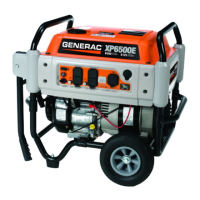
